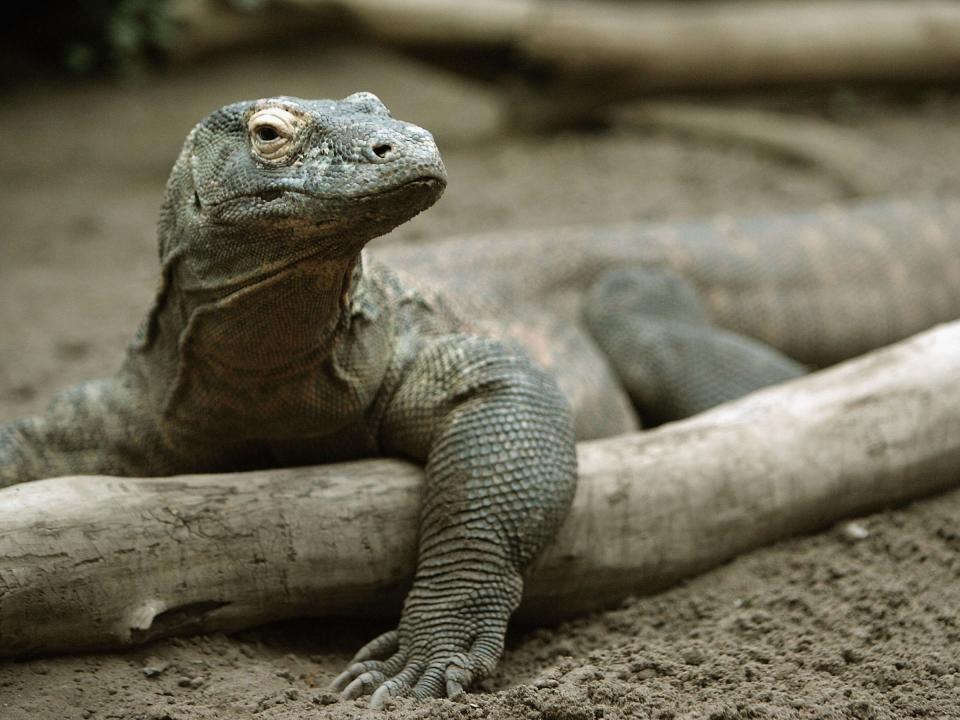New research suggests that Komodo dragons don’t travel long distances because they’re 'homebodies,' which sounds pretty relatable

Peter Macdiarmid/Getty Images
Despite their large, intimidating features, Komodo dragons are actually "homebodies" that don't like moving around much.
After studying a group of Komodos on Indonesia's Lesser Sunda Islands, researchers noticed the lizards seldom left the valley from which they were born, even though they physically can travel long distances.
When the lizards were moved to another region of their home island, most of them made their way back to their original habitat within months.
However, those that were moved to a completely different island didn't bother to make their way back to their home island, and instead just settled into their new environment.
Scientists believe the Komodos don't move because of the risks that come with migration, even though it's not much safer to stay put despite food shortages, natural disasters, and human activity in their habitats.
Komodo dragons (Varanus komodoensis) are pretty bloody terrifying. They hold the honor of being the world's largest and heaviest lizard, reaching lengths of 3 meters (10 feet) and weights of 140 kilograms (300 pounds).
Not only are they built like a "reptile" Jason Statham, but they also possess a deadly arsenal of weapons – razor-sharp claws, serrated teeth, and a venomous bite. All this (along with their powerful sense of sight and smell) makes them a force to reckon with for any unlucky creature that catches their interest when they are hungry, be that a deer, a pig, a human, or even another dragon.
That is to say that dragons are hardy beasts, able to take on all sorts of animals and trek through all sorts of rough terrain. So we should count ourselves lucky they haven't taken over the world – and the reason they haven't is really pretty adorable. According to a study recently published in the Proceedings of the Royal Society B, Komodo dragons are massive homebodies.

REUTERS/Sigit Pamungkas
Ecologists spent 10 years monitoring the movements of Komodo dragons living in Indonesia’s Lesser Sunda Islands. They found that despite their ability to travel long distances, very few ever left the valley they were born in. In fact, during all that time, there were only two reports of dragons making transoceanic crossings to another island. Either they are extremely lazy or they enjoy home comforts.
Research suggests the latter. Over the course of the study, seven dragons were taken out of their home valley and transported to another area miles away. Within just four months, almost all had returned to the original location. There was just one exception. Dragons moved to a new island appeared to settle there, unable to bring themselves to swim across the small band of water separating them from their home territory.

Christopher Furlong/Getty Images
So, why is this? The researchers don't know for sure but they have an idea. They suspect moving is too risky for the dragons, who could find themselves in short supply of water, food, or mates if they make an incorrect move.
But by staying put, they are putting themselves and their species at risk. Microsatellite data suggests that gene flow is extremely low but it's not just inbreeding. Food shortages, natural disasters, and human activity (namely poaching) threaten local populations. Still, they don't move.
“They stay put almost irrespective of how bad it gets,” lead author Tim Jessop, a professor of ecology at Deakins University in Australia, told The New York Times. “It’s a bit bewildering.”
And yet they are not alone. Many island creatures show similar homebody characteristics, despite the great lengths it took for their ancestors to get there.
Visit INSIDER's homepage for more.
NOW WATCH: This mind-melting thought experiment of Einstein's reveals how to manipulate time
See Also:

 Yahoo News
Yahoo News 

